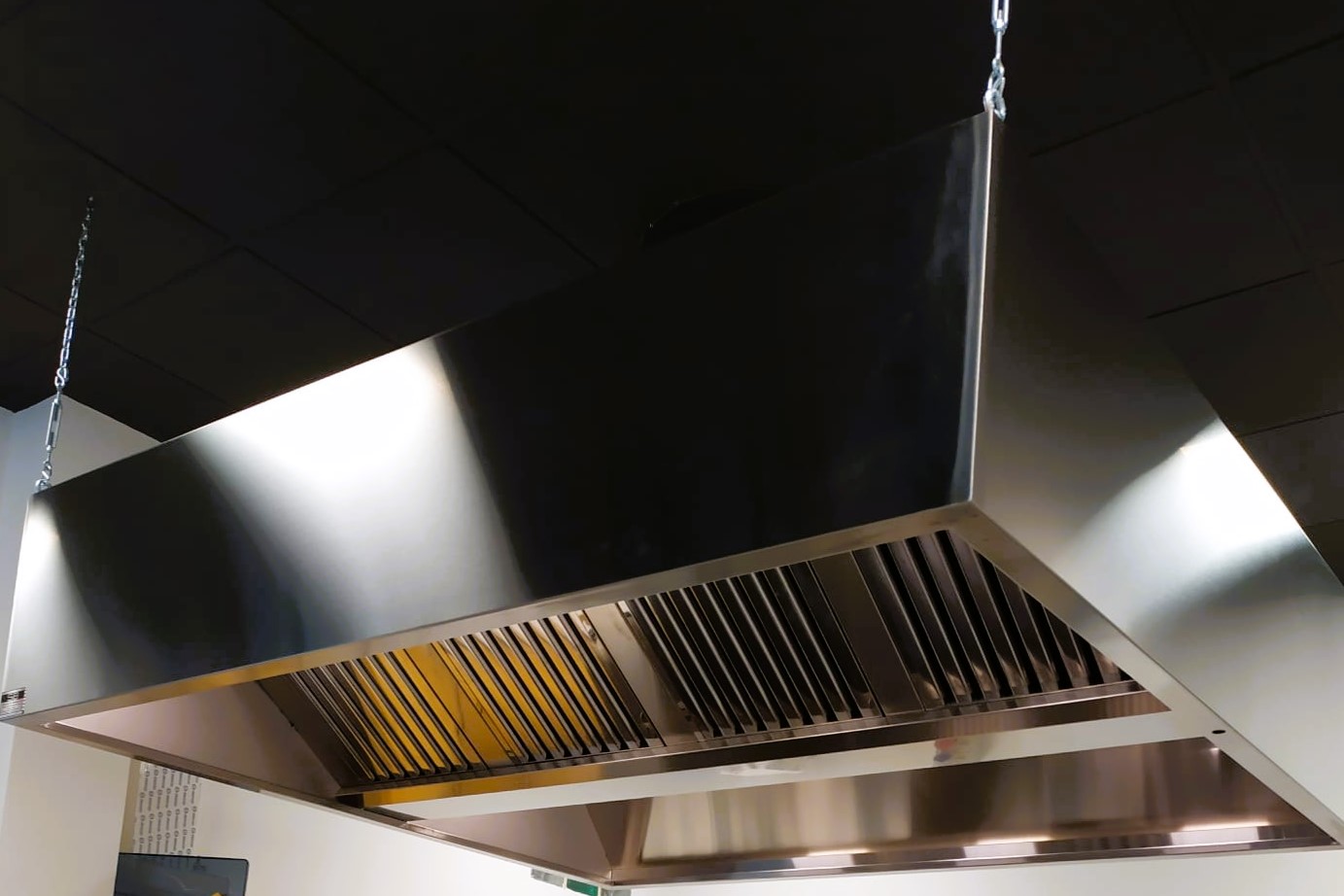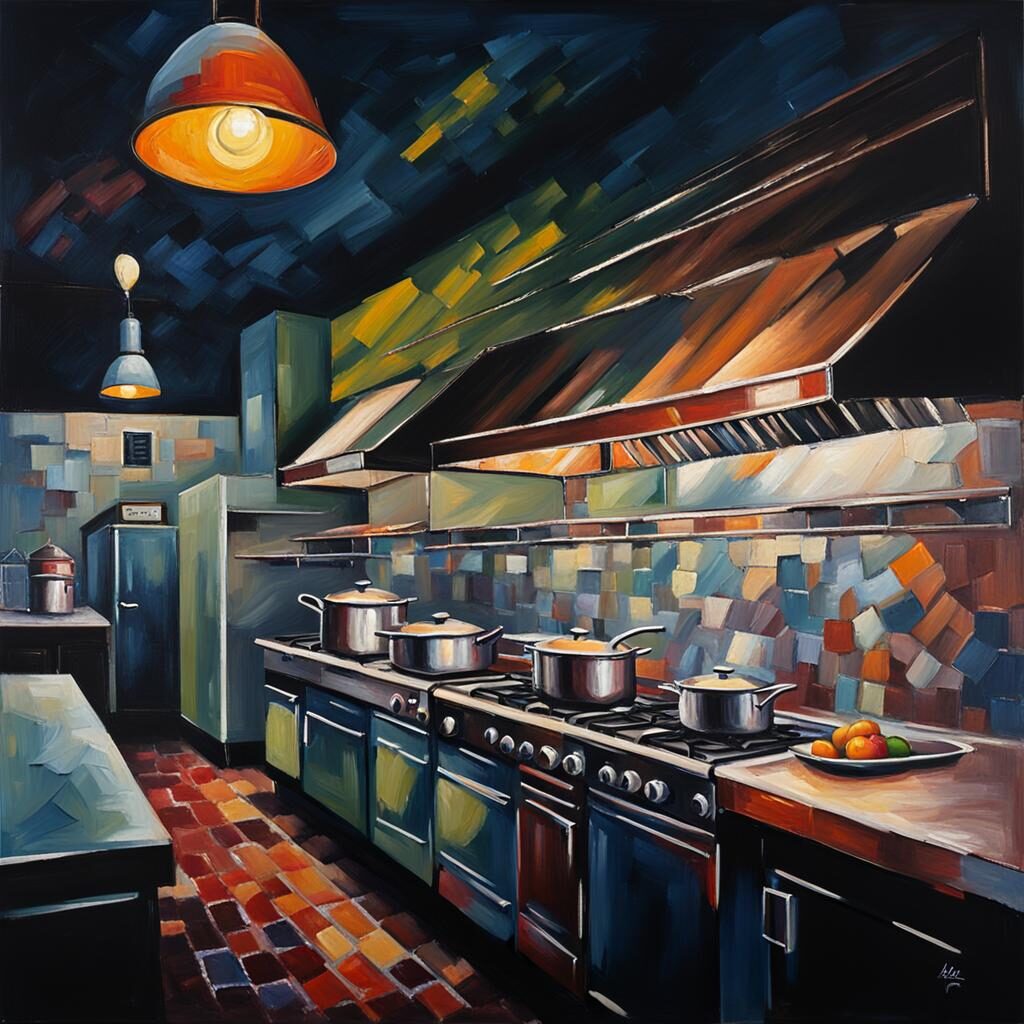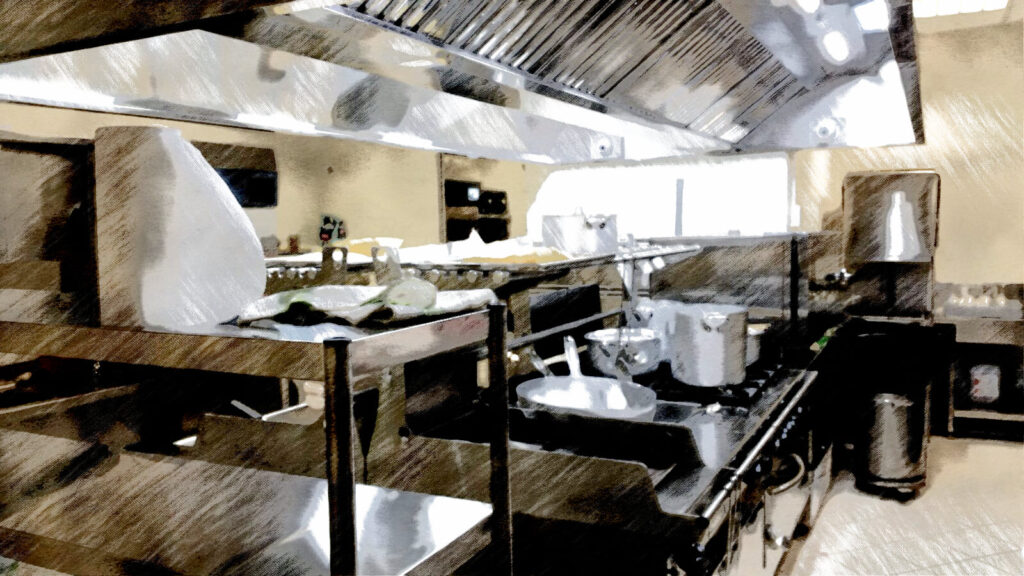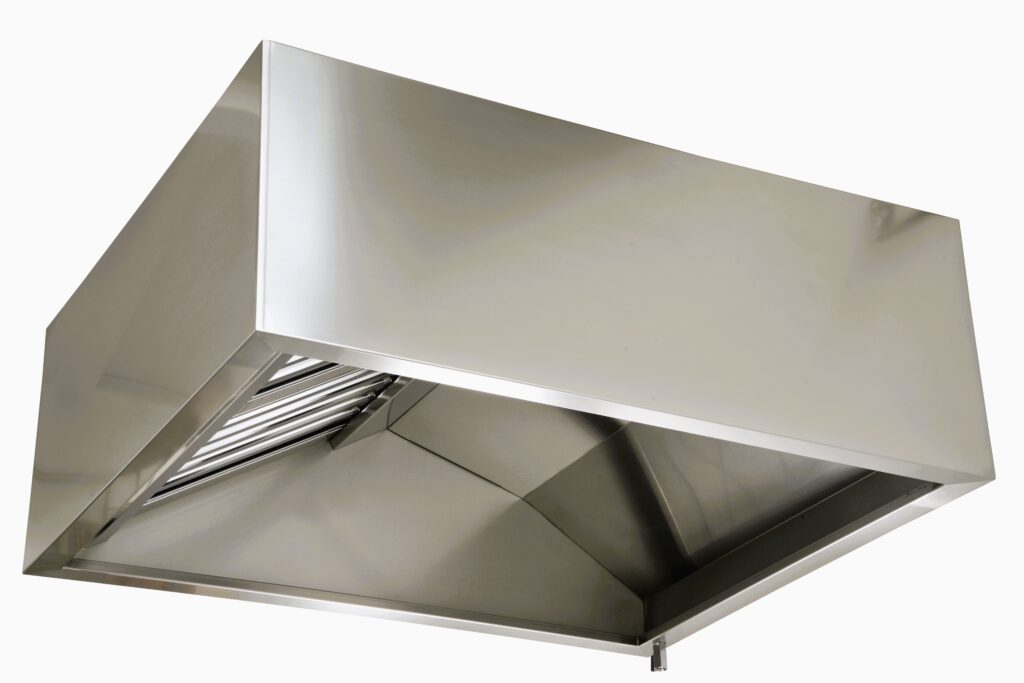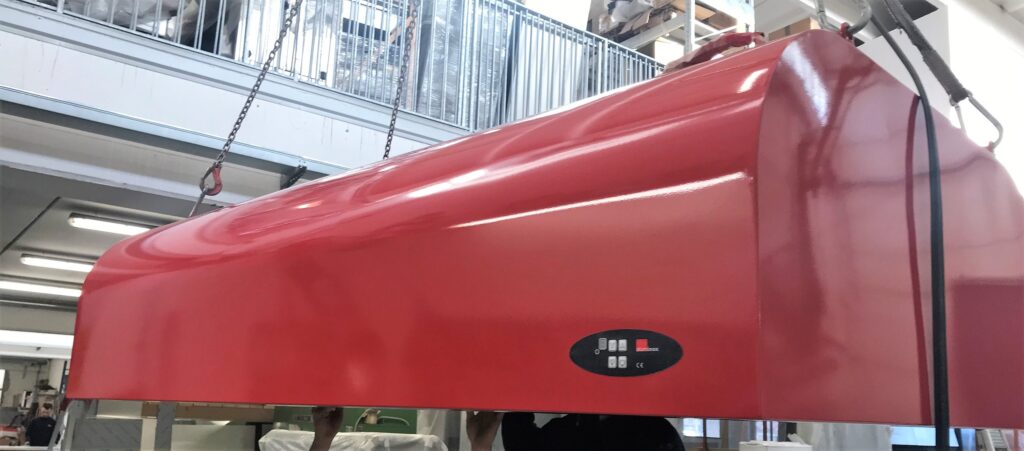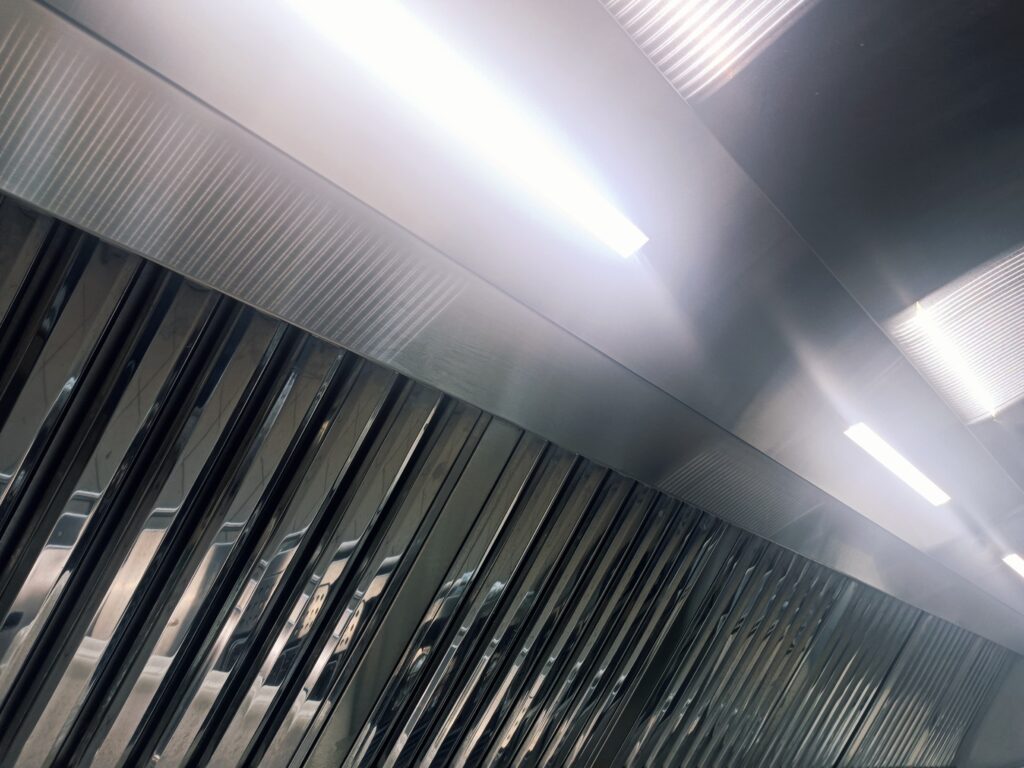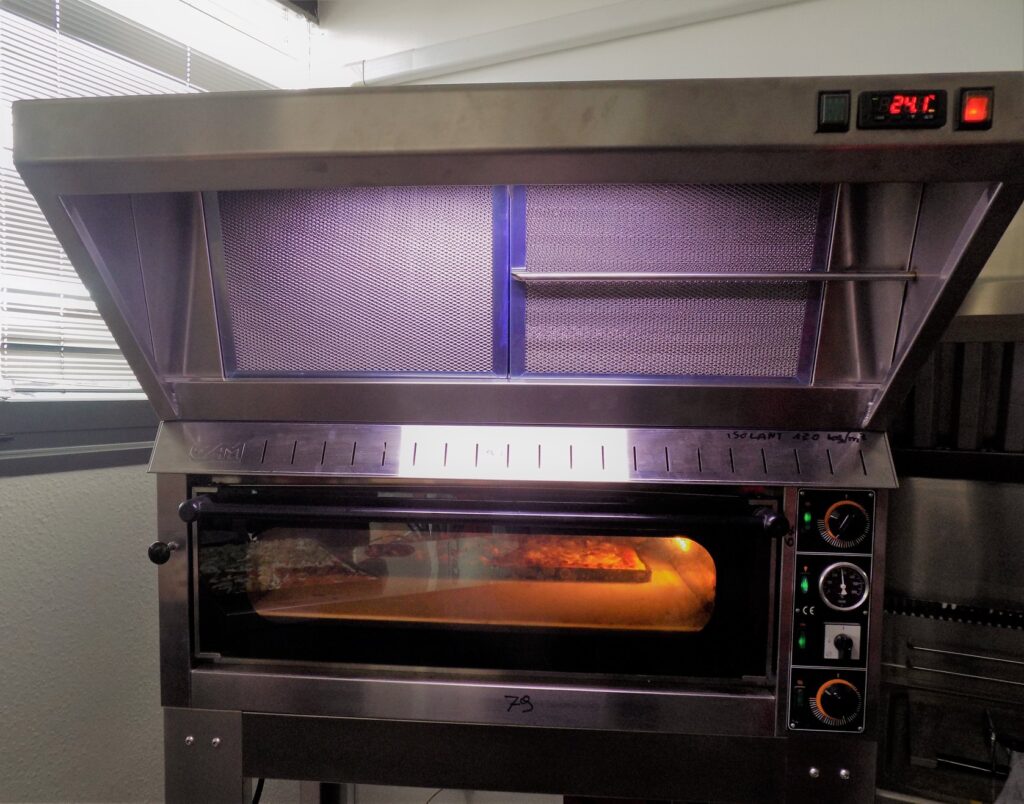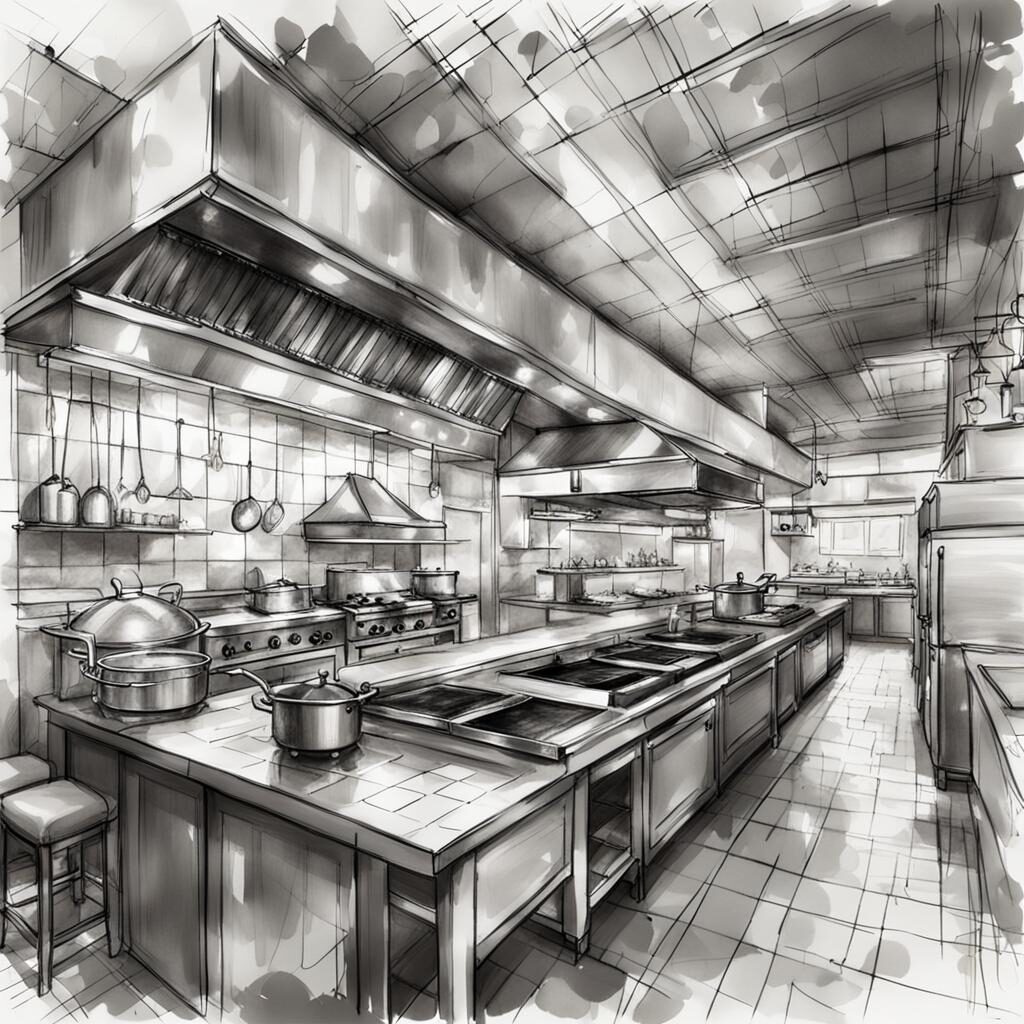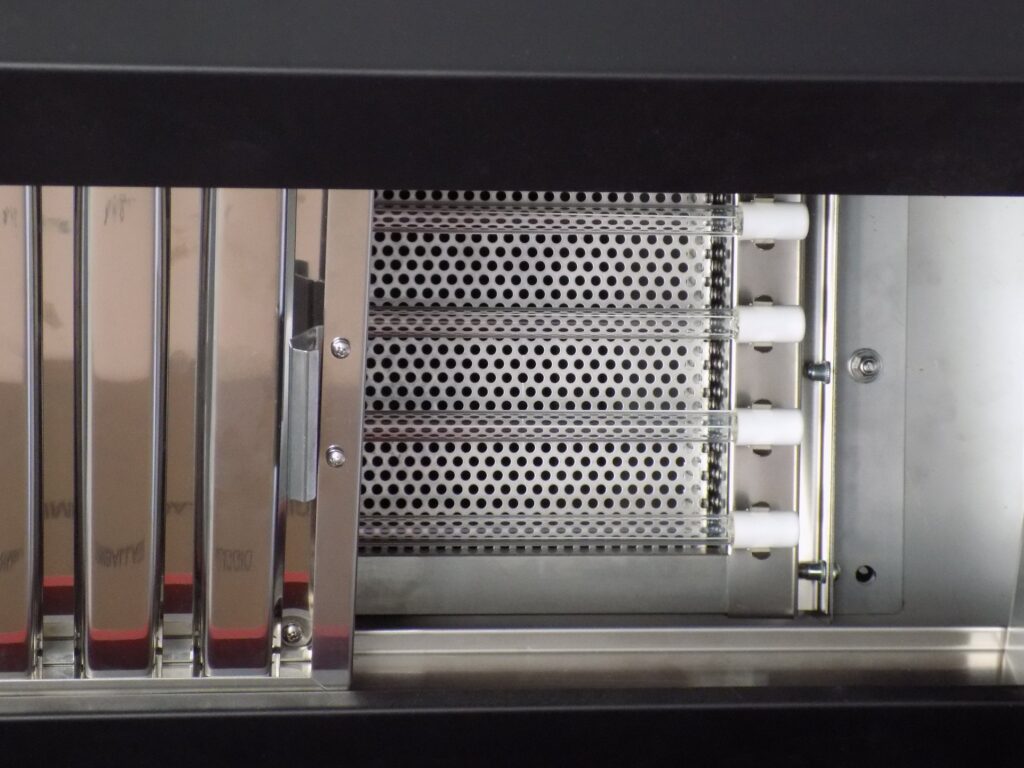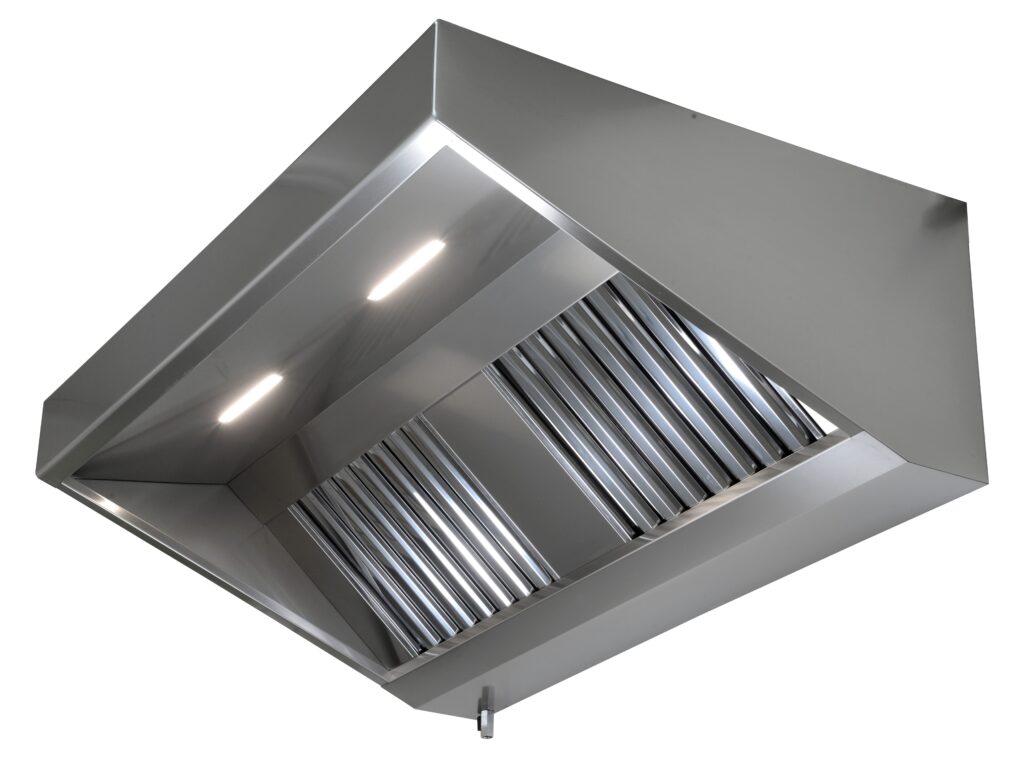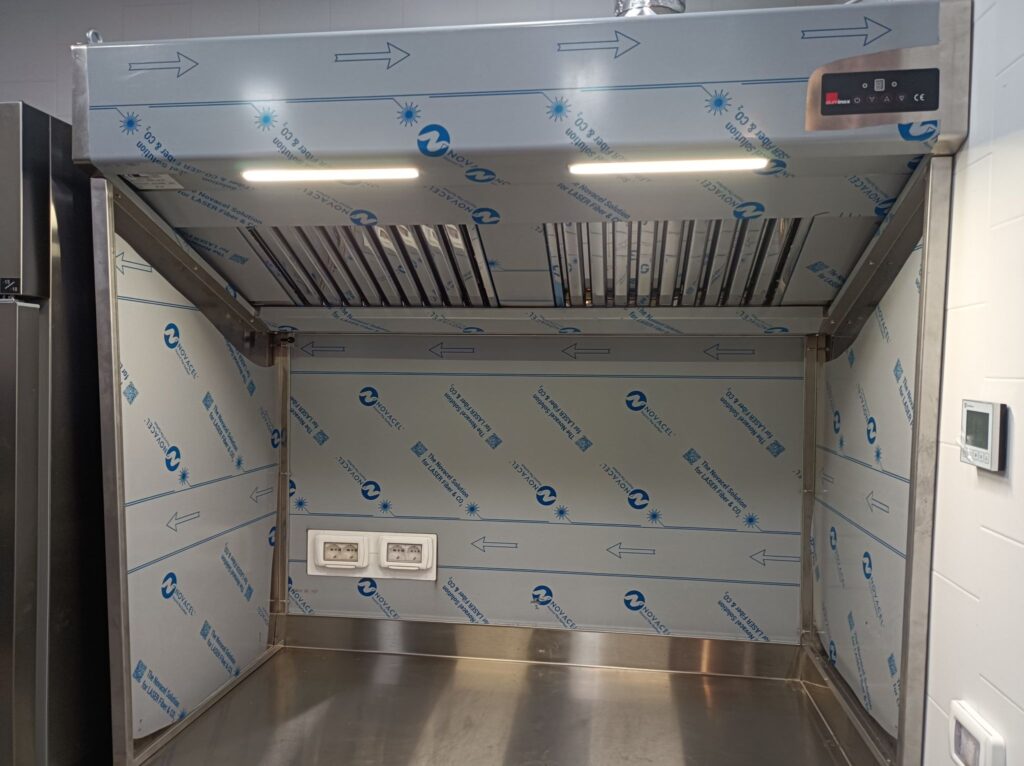Even if extraction is not your daily bread ‘n butter, you may have noticed how the external edge of the hoods protrudes a few more centimetres from the edge of the cooking line.
This overhang has a practical reason, as it is easy to imagine: it helps to capture cooking vapours and fumes more efficiently.
The edge must obviously be positioned according to the type of hood: on three sides in the case of a wall hood, only at the front in the case of a hood with lateral bulkheads, or on all 4 sides in the case of a central hood.
How long the overhang should be, it’s a rather tricky question.
First of all, it is always necessary to consult the relevant regulations. These always give a certain “room” for manoeuvre, for which we recommend contacting an expert in the field of extraction in the catering sector.
Let’s say that, generally, the minimum overhang on which we at Aluminox work is normally 200mm on the perimeter parts. It can be between 400mm and 600mm (front overhang) in the case of convection ovens or dishwashers, to better capture vapours or fumes, when the doors of such equipment are opened.
Also as it comes to compensation hoods, a greater overhang could be advisable: the continuous movement of the air, sucked in and reintroduced, could in fact “disturb” the vertical ascension of the fumes. A greater overflow would help in this sense.
Last, but not least: the overhang also depends on the height of the hood. Now, there are, also for this aspect, different regulations depending on the location (or the type of cooking).
The general rule says: the higher the hood, the greater the overhang must be.
The reason is simple, although not obvious: the more the fumes have to travel, the greater the risk that they disperse.
But it’s a general rule, As I said. Just like the others above.
Our advice is to rely on experts when it comes to extraction.
And ask for a Premium quality hood. That’s right, Aluminox!

 Italiano
Italiano
